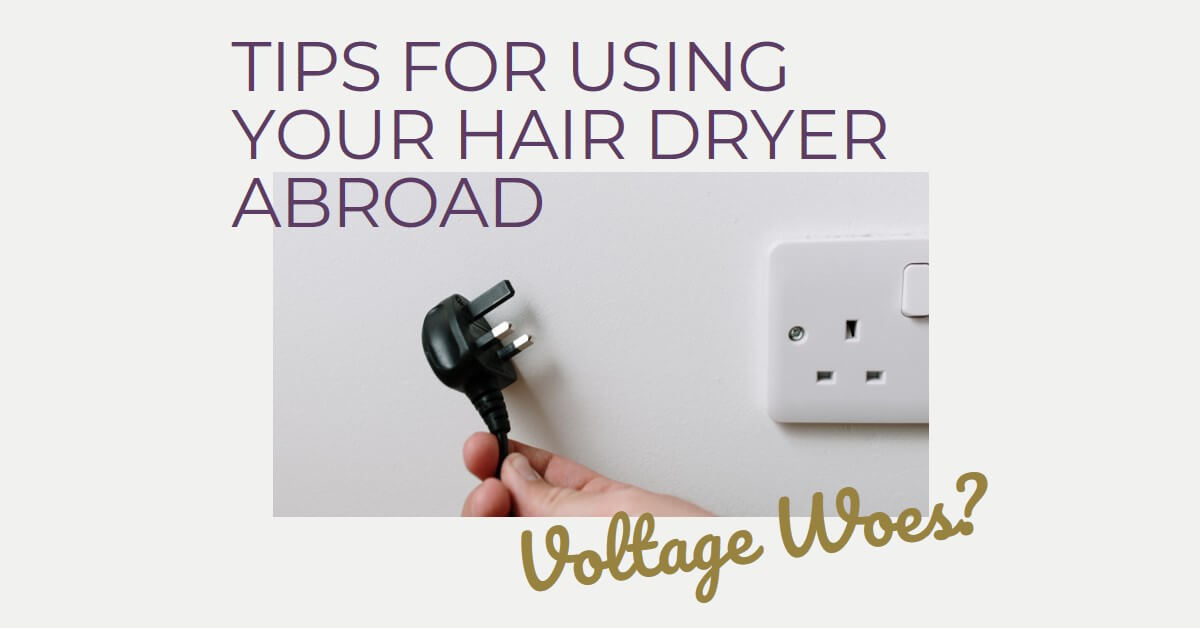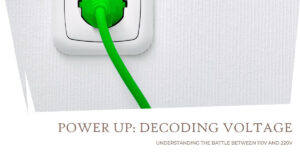Image: “Article Feature Image” by Bing, Source: [Bing Graphic Art].
When it comes to using electrical devices, it’s crucial to understand the importance of matching voltage levels. In the USA, the standard voltage for most household appliances, including hair dryers, is 110V.
However, in other countries, like many in Europe and Asia, the standard voltage is 220V. Connecting a 110V hair dryer to a 220V outlet can lead to serious consequences, potentially damaging the device and posing safety hazards.
In this article, we’ll explore what can happen if you mistakenly use a 110V hair dryer on a 220V outlet and how to avoid these issues.
Understanding Electrical Voltage
Voltage refers to the electrical potential difference between two points in a circuit. In the USA, the standard voltage is 110V, while in other parts of the world, like Europe and Asia, it is 220V. This difference in voltage is essential to power various electrical appliances and devices.
Consequences of Using a 110V Hair Dryer on a 220V Outlet
Connecting a 110V hair dryer to a 220V outlet can lead to several significant problems:
1. Potential Damage to the Hair Dryer
The primary concern when using the wrong voltage is potential damage to the hair dryer itself. The internal components, particularly the heating element, motor, and control circuit, are designed to operate at specific voltages.
When subjected to higher voltage, these components can overheat, leading to malfunctions or even permanent damage.
2. Fire Hazards
Using a hair dryer with the wrong voltage can create fire hazards. The increased voltage may cause the hair dryer’s wires and components to overheat, potentially igniting a fire. Electrical fires can be dangerous and cause significant property damage, putting your safety at risk.
3. Electrical Shocks
Higher voltage can increase the risk of electrical shocks when using a 110V hair dryer on a 220V outlet. This is especially dangerous, as electric shocks can lead to serious injuries or even be life-threatening.
Specific Risks and Scenarios
1. Dual Voltage Hair Dryers
Some modern hair dryers are designed to be dual voltage, which means they can work with both 110V and 220V outlets.
These hair dryers have a switch or an automatic voltage adjustment feature. However, using them on the wrong setting can still lead to issues.
2. Single Voltage Hair Dryers
If your hair dryer is single voltage (110V only), using it in a 220V outlet without the proper voltage converter can cause immediate damage.
3. Traveling Abroad with Hair Dryers
Travelers should be especially cautious about using their hair dryers in foreign countries. It’s essential to understand the voltage used in the country you’re visiting and take appropriate precautions.
Protective Measures and Precautions
1. Using Voltage Adapters and Converters
If you find yourself in a situation where you need to use a 110V hair dryer on a 220V outlet, invest in a reliable voltage adapter or converter. These devices can help regulate the voltage and prevent damage to your hair dryer.
2. Investing in a Dual Voltage Hair Dryer
For frequent travelers, investing in a dual-voltage hair dryer is a wise decision. These hair dryers are designed to work safely with different voltage levels, ensuring you can use them in various countries without issues.
3. Checking Labels and Specifications
Always read the product labels and specifications before using any electrical device. Look for voltage information and ensure it matches your intended usage.
Read also my article: Hair Dryer Get Wet? Know the Risks and How to Handle Them.
What to Do If a Mistake Occurs
If you accidentally use your 110V hair dryer on a 220V outlet:
1. Unplug the Hair Dryer Immediately
Turn off and unplug the hair dryer as soon as you realize the mistake to prevent further damage.
2. Assessing Damage
Visually inspect the hair dryer for any signs of damage. However, it’s best to seek professional help to thoroughly assess the extent of the problem.
3. Dealing with Insurance (if applicable)
If your hair dryer is damaged due to voltage issues, check if your homeowner’s or renter’s insurance covers electrical mishaps.
For more information read my article: Is Your Device 110V or 220V? Here’s How to Find Out.
Conclusion
Using a 110V hair dryer on a 220V outlet can have serious consequences, including damage to the device, fire hazards, and electrical shocks.
It’s essential to pay attention to voltage specifications and use the appropriate protective measures, such as voltage adapters or dual voltage hair dryers when traveling abroad.
By being informed and cautious, you can ensure the safe and proper use of your hair dryer for years to come.
Want to learn more about electricity? Check my YouTube channel!
Are You An Electrical Engineer or Electrician?
Install my Free On Google Play Now! It’s 100% Free
The staff I recommend (Amazon Affiliate Links to products I believe are high quality):
- Economy 120 Volt/60Hz AC Power Source – Step-Down Voltage & Frequency Converters 1800W
- UNI-T Digital Multimeter Tester UT139C
- 50-Amp Extension Cord for RV “100ft”
- Voltage Stabilizer 110/220v
- Hair Dryer “best selling“
- TOSHIBA EM131A5C-BS Countertop Microwave Ovens
Disclaimer: This contains affiliate links to Amazon products. I may earn a commission for purchases made through these links.

